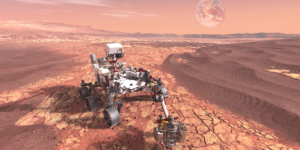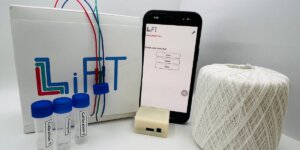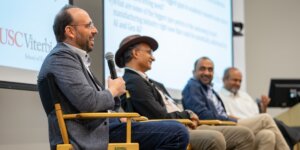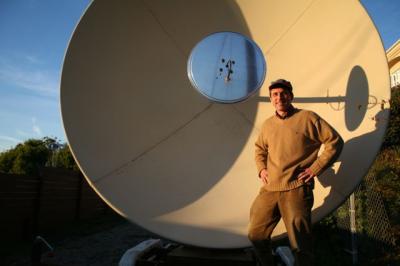
ISI Senior Design Engineer Tim Barrett keeps in touch with CAERUS (click for larger image)
All systems were go — and went perfectly — December 8 at Cape Canaveral, with the newly developed Falcon 9 heavy lift vehicle sending into earth orbit a packet of nanosatellites, including a unit that the Viterbi School’s Information Sciences Institute (ISI) and its Department of Astronautical Engineering’s Space Engineering Research Center (SERC) jointly played a key role in developing.
This was only the second flight of Space X’s Falcon 9 and the first commercial flight of a recoverable capsule, the Dragon. By demonstrating the ability to carry astronauts to the International Space Station (ISS), the launch was truly a breakthrough for the private space industry in the US.The orbiting packet, a 3-unit “cubesat” called “MAYFLOWER,” is a Next Generation Technology Nanosatellite that is a joint effort between USC, Northrop Grumman’s NOVAWORKS division and other companies. USC supplied one of the three units, named CAERUS (the Greek word for “opportunity”), to support communications. (see photo, below right)
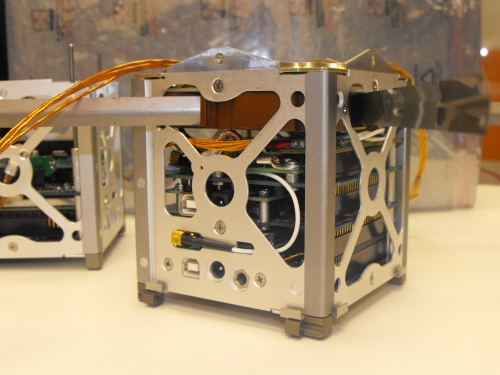
MAYFLOWER is now orbiting around the earth about every 90 minutes at an altitude of more than 300 kilometers. (Details on the project and its current orbit can be found at http://www.isi.edu/projects/serc/caerus)
The CAERUS team included David Barnhart, who originated space projects at ISI, and Senior Design Engineer Tim Barrett. Technical specialists are Will Bezouska, Michael Aherne and Jeff Sachs.
Working with a host of undergraduate and graduate students from the USC Department of Astronautical Engineering and other departments at the University of Southern California’s Viterbi School, the team delivered CAERUS just fourteen weeks after receiving authorization to proceed on the project.
Professors Joseph Kunc and Daniel Erwin led the campus teams from the Department of Astronautical Engineering and the SERC. A joint effort between Astronautics and ISI, the SERC’s expertise and student involvement provided critical support for the rapid ground-station development timeline.
“We are proud to be associated with a paradigm-shift in space flight,” said Yannis C. Yortsos, Dean of the Viterbi School.

Computer graphic real time rendering of CAERUS in orbit passing over the Pacific off Los Angeles, accurately tracked for position over map.
“It was indeed a great day for USC,” said Joseph Sullivan, Associate Director at Information Sciences Institute. “The first flight is the hardest to achieve.”
“It is amazing what can be accomplished in an ‘engineering teaching hospital’ environment by students with a passion for space,” said Kunc.
The Viterbi School and ISI will go back into space in 2011 with a different satellite project, another 3-unit cubesat, this one called AENEAS, that also is being developed at ISI with the SERC. CAERUS components and software are similar to AENEAS, allowing USC a very rare risk mitigation test of its hardware &ndash the ‘opportunity’ referred to in the CAERUS name — before delivery of AENEAS.
Published on December 10th, 2010
Last updated on May 31st, 2024




